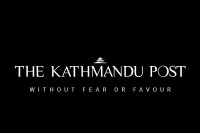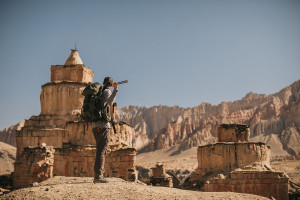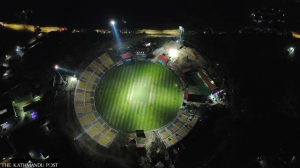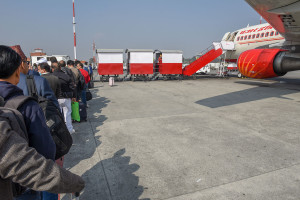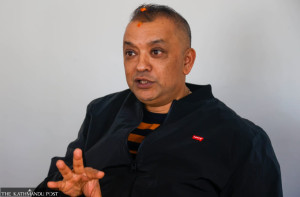Money
Border hassles and idle airport can’t stop surge in Bhairahawa luxury hotels
Despite problems at the Belahiya border and no international flights, Rupandehi’s hospitality sector is booming with high-end hotel investments.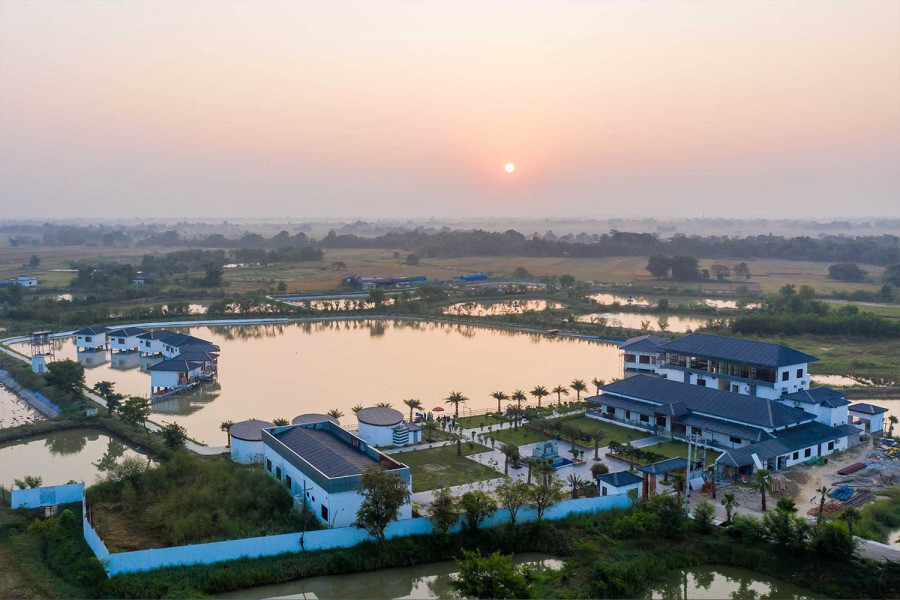
Dipendra Baduwal
Tourism entrepreneurs in Rupandehi have long expressed frustration over mismanagement at the Belahiya border point—Nepal’s busiest land crossing with India. They argue that tourists are harassed in the name of security checks, and cite persistent inefficiencies at the immigration office.
More recently, with Gautam Buddha International Airport in Bhairahawa failing to run regular international flights, they have taken to the streets, staging protests at the airport gate. These repeated demonstrations stem from grievances and anxiety over the assurance of massive private investments in the district’s burgeoning hotel sector.
Following the completion of the airport in Bhairahawa, private investors rapidly funnelled resources into the hospitality industry, betting big on an anticipated influx of international tourists. The focus has been on Indian pilgrims and leisure travellers heading to Lumbini—the birthplace of the Buddha—and those using Rupandehi as a transit to other popular destinations like Pokhara, Chitwan, Muktinath, and Kathmandu.
What began as modest hotel investments clustered in urban centres such as Butwal, Bhairahawa, and Lumbini has become a district-wide boom. High-end hotels, mid-sized lodges, and boutique resorts are now spread across the municipalities in 16 districts. Some are situated just a few hundred metres apart. Others are still under construction, signalling that the trend is far from peaking.
Even rural pockets—where few hotels previously operated—are seeing luxury properties emerge, many of them not affiliated with formal tourism associations. These establishments cater to local conferences, family functions, and growing weekend tourism.
Resorts have popped up beside rivers and fish ponds. Older hotels are expanding and upgrading their facilities to remain competitive. Locations such as Devdaha, Shuddhodan, Saljhandi, Sainamaina, and Siyari have seen noticeable growth, while new banquet halls cater to the rising demand for weddings and public events.
The district is also now home to nearly half a dozen water parks.
Once limited to highways and trade corridors like the Butwal–Belahiya and Bhairahawa–Lumbini roads, hotel development has moved outward. Over 40 tourist-class hotels now line the route from Chidiyakhola to Belahiya. A dozen more are on the path from Bhairahawa’s Buddha Chowk to Lumbini.
Even the Siyari Rural Municipality, known for fish-based tourism, hosts about a dozen hotels. Tilottama Municipality, geographically central in Rupandehi, is becoming a new nucleus for luxury hospitality. Lumbini alone boasts more than 80 operational hotels.
Surprisingly, many new hotels set up away from the usual hospitality corridors are proving more attractive to travellers. Their appeal lies in superior amenities and tailored experiences.
According to the Siddhartha Hotel Association of Nepal, around 150 high-quality hotels, including Lumbini, have opened along the corridor from Belahiya to Mangalapur. Among the 70 registered members are prominent names like Tiger Palace Resort (operated by Soaltee), Siddhartha Vilasa, and other well-known four-star establishments, including Nans, Pauwa, Maurya, Nirvana, Radisson, Bhairahawa Airport Hotel, and Bhairahawa Garden Resort.
New entrants such as Buddha Regency, Sunstar, Landmark Bhairahawa, Hidden Palace, Marigold Palace, and Sambriddhi make the region’s hospitality scene more competitive. Between Buddha Chowk and Belahiya, nearly every house has been converted into a hotel or guesthouse.
Development is particularly intense around the international airport. More than a dozen hotels now operate within a three-kilometre radius between the airport and Buddha Chowk, and more are in the pipeline.
Chandra Prakash Shrestha, president of the Siddhartha Hotel Association, credits the airport with this boom. “The hotel industry depends on tourist flow. If tourists arrive, hotels succeed, and banks become willing to finance more,” he said.
He estimates that the current investment targeting the airport has reached Rs70 billion. Upon completion of all ongoing projects, that figure could get Rs100 billion. According to Shrestha, Bhairahawa and its surrounding areas can accommodate up to 6,000 guests nightly—2,000 in star hotels and 4,000 in other quality lodgings.
Casino tourism is also making its mark. Eight mini-casinos near the border are already operating, mainly catering to Indian gamblers. Tiger Palace features a full-scale live casino. These gaming facilities and high-end hotel offerings draw more Indian tourists, many of whom visit with family. “Now, many Indian tourists come here not just for pilgrimage but for entertainment,” said Shrestha. “They want tasty food, luxurious rooms, and safe, family-friendly surroundings.”
With the Butwal–Narayanghat road being expanded, many visitors are using the Palpa–Siddhartha Highway to reach Pokhara.
Shrestha warns that repeated security checks can leave tourists with a negative impression. “They go back home and talk poorly about Nepal,” he said, advocating for a streamlined, single-window system at border entry points.
In Tilottama, the hotel boom is concentrated north and south of Manigram. More than a dozen upscale hotels have sprung up between Manigram and Yogikuti.
Notable names include Dreamland, Bishram Batika, Swan Regency, SR Hotel, Tulip, Hotel de Crown, and Pauwa. Moving northward from Yogikuti to Golpark, hotels such as The Flamingo, Velvet Lux, Denevo, Palm, Darcis, New Era, Dream International, and Avenues are making Butwal increasingly known for hospitality.
Prabin Bahadur Pathak, president of the Nepalese Hoteliers Association, said Butwal is becoming a hotel city. “We now need nightlife infrastructure,” he said, pushing for extended business hours to align with tourist needs.
He emphasised that while the volume of hotel openings is encouraging, service diversity is lacking. “If every hotel offers the same thing, it becomes unsustainable,” he warned. He advocates for hotels to specialise in rooms, restaurants, events, or wellness centres, allowing tourists to choose and businesses to thrive.
Pathak revealed that 55 quality hotels north of Butwal are NHA members, with investments ranging from Rs40 million to Rs4 billion. “Butwal should be open 24 hours,” he said, noting that Indian tourists only feel like they’ve truly travelled across the international border once they reach the city.
Entrepreneurs in Butwal are exploring options to make tourists stay longer, offering breakfast packages and short excursions for those en route to Pokhara. “We should encourage at least a one-night stay in Rupandehi,” said Pathak.
Rajesh Malhotra, deputy general secretary of the Hotel Entrepreneurs Federation, echoed the confidence in hospitality as a viable investment. “Unlike other sectors, the hotel business has standard practices, so the risk of fraud is low,” he said.
This perceived stability is attracting general investors. “The hotel business is also one of the simplest forms of industry,” he added. With properties offering bundled services—rooms, restaurants, banquet halls, casinos, spas—hoteliers can offset losses in one area with gains in another. The rise of destination weddings has added further incentive for hotels to expand event facilities.
Lumbini, too, is experiencing a boom. Major hotels near the sacred site include Lumbini Heritage, Buddha Maya Gardens, Hokke, Kasai, and Crystal. Some have upgraded their infrastructure, and new ones are coming up with mid-sized capital.
Hotel Barahi, currently under construction in the southwest of Lumbini, will be a significant addition.
Meanwhile, the Golyan Group is building a Hyatt hotel at Danav Kinara, midway between Bhairahawa and Lumbini.
Leelamani Sharma, senior vice president of the Hotel Association Lumbini, said Barahi and Hyatt are five-star projects.
“We are preparing for an excellent season ahead with several large-scale Buddhist rituals scheduled,” he said. “Our goal now is to find ways to make tourists extend their stay.”




 20.12°C Kathmandu
20.12°C Kathmandu

